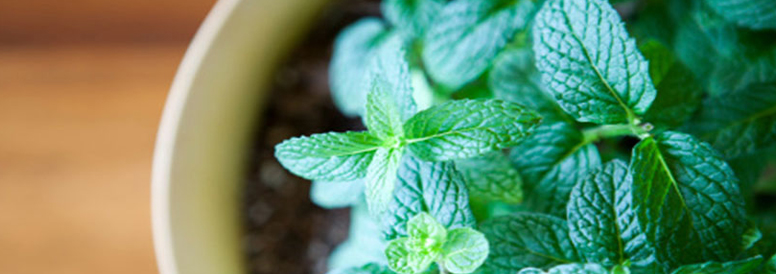Luteolin in Foods
Luteolin in Foods
Luteolin is a yellow, crystalline, polyphenolic flavonoid that is present in many fruits and vegetables like apples, carrots, celery, cabbage, green peppers, and dandelion leaves. Luteolin is also present in olive oil as well as herbs and teas, including rosemary, thyme, oregano, peppermint, and chamomile.
Although luteolin is widespread in common foods, the estimated daily consumption from a typical diet is less than 1 mg per day.1 People who eat more processed foods and fewer fresh fruits, vegetables, and herbs consume even less luteolin.
Luteolin Properties and Uses
Luteolin’s Unique Properties
Plant flavonoids are well known for their antioxidant and anti-inflammatory properties, offering protection from cancer, heart disease, and chronic inflammatory conditions. Luteolin is no exception to this rule, but may also offer additional, unique benefits. Basic research shows that luteolin acts as a natural antihistamine by preventing mast cell degranulation; it attenuates airway mucus production by inhibiting gamma-aminobutyric acid A (GABAA) receptors; it decreases inflammation by modulating immune cytokines; and it can cross
the blood-brain barrier.
The discovery of its unique molecular mechanisms of action has brought luteolin into the limelight as a potential therapy for allergies, asthma, eczema, and even neuroinflammatory conditions.
Research Studies Highlight Luteolin’s Many Uses
Mast cell stabilization: Mast cells play a role in immunity to certain parasites and bacterial infections, but they also wreak havoc in patients with allergies. When stimulated by immunoglobulin E (IgE) in reaction to even tiny amounts of allergens, mast cells degranulate; release histamine; and cause symptoms like sneezing, congestion, wheezing, itchy eyes, hives, and brain fog.
Luteolin inhibits mast cell degranulation, effectively blocking the release of histamine before it causes allergic symptoms. Luteolin has been identified as the active ingredient in two herbal remedies that have historically been used for allergies: Impatiens textori (impatiens) and Perilla frutescens (perilla). Experimental studies in mice have shown that luteolin is responsible for the anti-inflammatory as well as the anti-pruritic effects of perilla leaves.
In a study of 15 different plant flavonoids, luteolin demonstrated the greatest inhibitory effect of all flavonoids on mast-cell histamine release. Luteolin was even more effective than the well-known mast stabilizer quercetin at preventing histamine release.
Mucus attenuation: Excessive mucus production in the airways is a hallmark symptom of allergic asthma. Studies have shown that activation of GABAA receptors plays a role in mucus oversecretion.
An experimental study in 2016 demonstrated that luteolin attenuated mucus production from goblet cells by inhibiting GABAA receptors. Also, luteolin showed a beneficial effect on airway responsiveness, decreasing bronchoconstriction in experimentally induced asthma in mice
and cats.
Cytokine modulation: High levels of inflammatory cytokines are present in chronic conditions like asthma and arthritis. Luteolin inhibits IgE-mediated production of interleukin-6 (IL-6) and tumor necrosis factor-alpha (TNF-a).
Luteolin also inhibits central mediators of inflammation, including cyclooxygenase-2 (COX-2) and nuclear factor-kappa B (NF-kB). In an experimental model of autoimmune thyroiditis in mice, luteolin demonstrated an ability to inhibit interferon-gamma (IFN-l)-induced increases in COX-2, and also to inhibit TNF-a secretion.
Crossing the blood-brain barrier: Many neuropsychiatric and neurodegenerative disorders are thought to involve inflammation within the brain. Examples include multiple sclerosis, Alzheimer’s disease, and even autism spectrum disorder (ASD). Studies show that luteolin crosses the blood-brain barrier and stabilizes T-cell activation as well as mast cells within the brain.
Because of these mechanisms, researchers have suggested that luteolin may be helpful in reducing symptoms of brain fog. Published case series and a small pilot study suggest that luteolin is beneficial in patients with ASD, but its clinical effects in other neurological conditions have not been studied in human trials.
Clinical Trials: Studies of luteolin absorption and metabolism in humans show that plasma concentrations of luteolin and its conjugates reach the highest level approximately one hour after oral dosing. Luteolin has a half-life of less than five hours, which means it’s necessary to
take it multiple times a day to maintain therapeutic levels in systemic circulation.
It’s relevant to note that most of what we know about luteolin comes from basic scientific research, including in vitro studies and animal experiments. Aside from a 2013 pilot study in children with ASD, human clinical trial data are lacking for this fascinating flavonoid. Nevertheless, luteolin has become a popular ingredient in dietary supplements to support neuroprotection and immune modulation.

